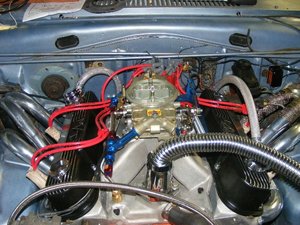Map63Vette
Well-Known Member
So I just went out and bought a little set of triple gauges to try to keep better track of everything going on (the car had an engine swap from /6 to 318 and I wanted a volt meter since the stock ammeter connectors at the firewall were fairly melted), but am having some issues trying to figure out where to put the temperature probe for the new temp gauge. Evidently Mopar likes tiny little temp senders, but there is no way the gauge will fit in the stock hole (pretty sure it's a stock 318 intake, has aftermarket Carter carb, but intake looks pretty normal). Has anyone else out there come up with a clever way of putting in an aftermarket temperature probe on a stock 318? I was thinking of just making a sleeve with a bung in it or putting a t fitting on a heater hose to pull off of one of the hoses, but wondered if there was a better way to do it. Any suggestions? Picture would be great if anyone has them :-D.

















